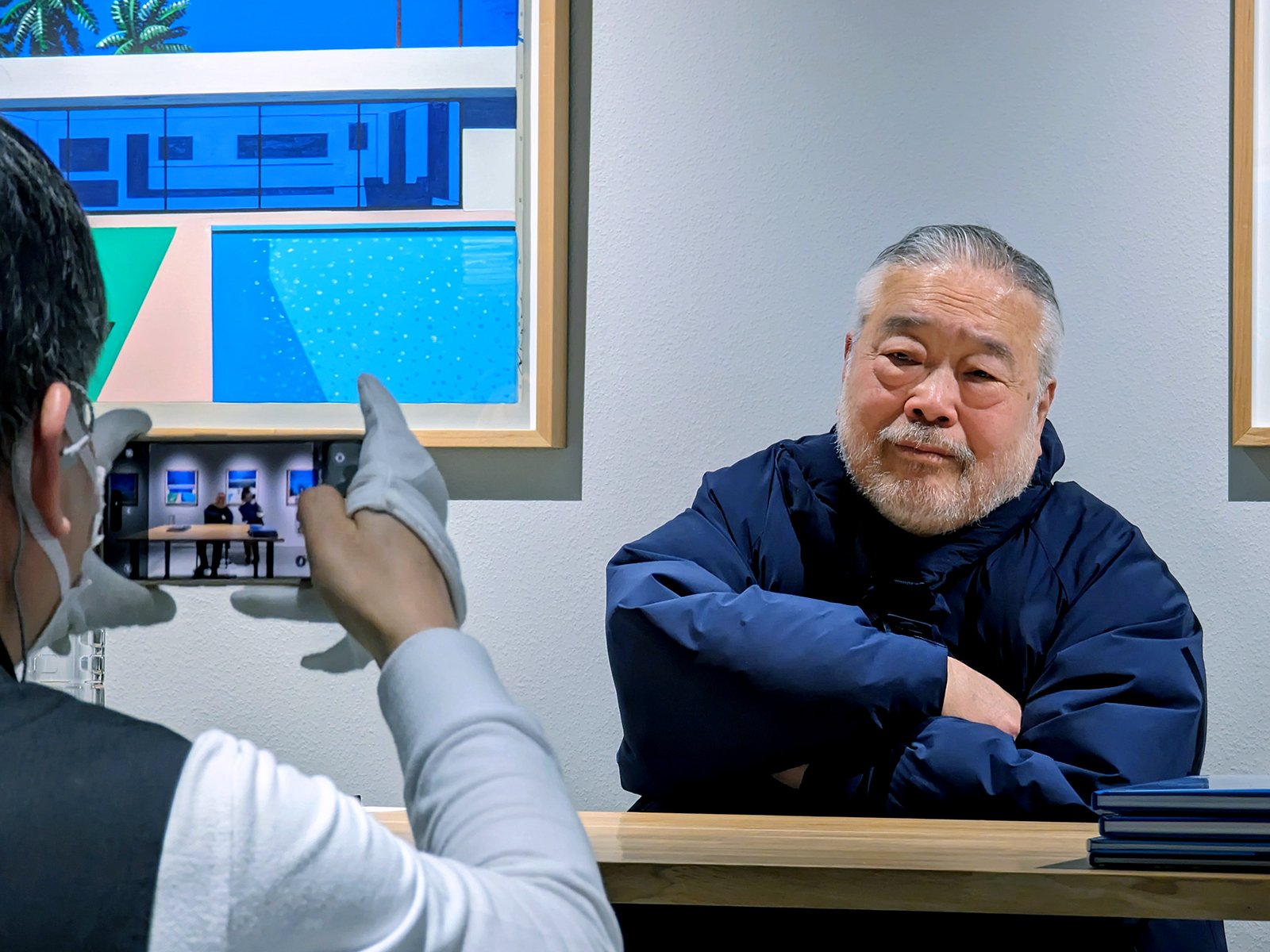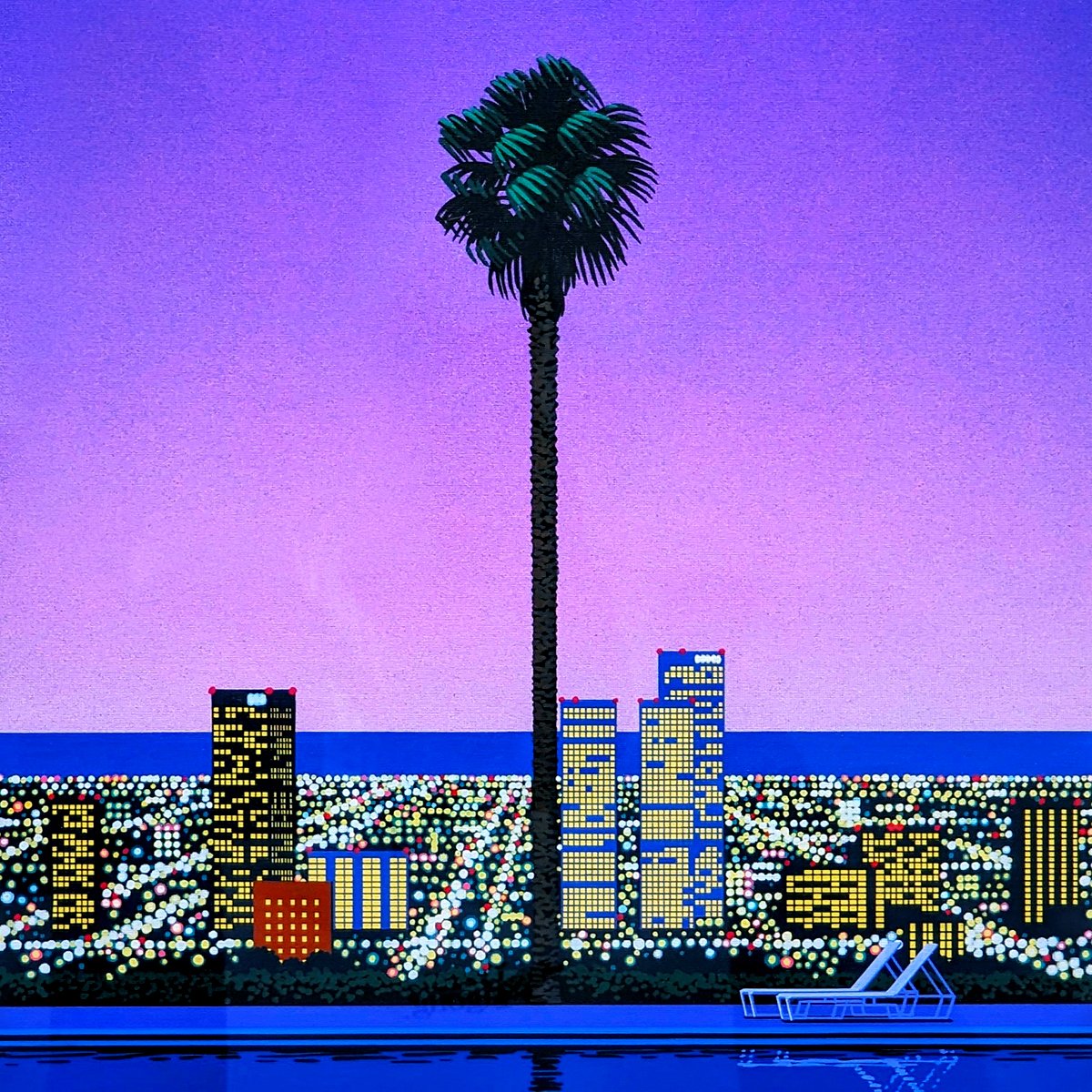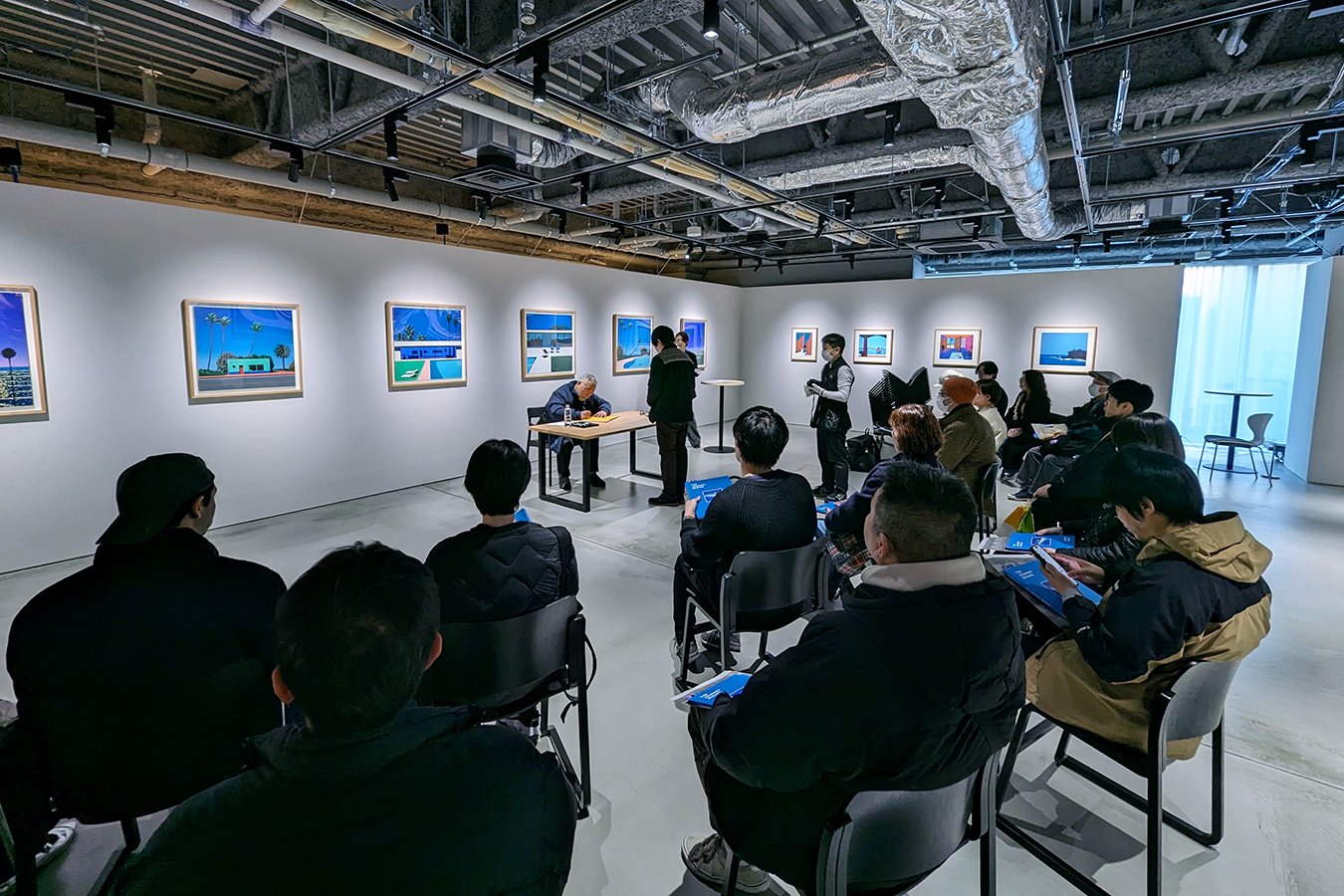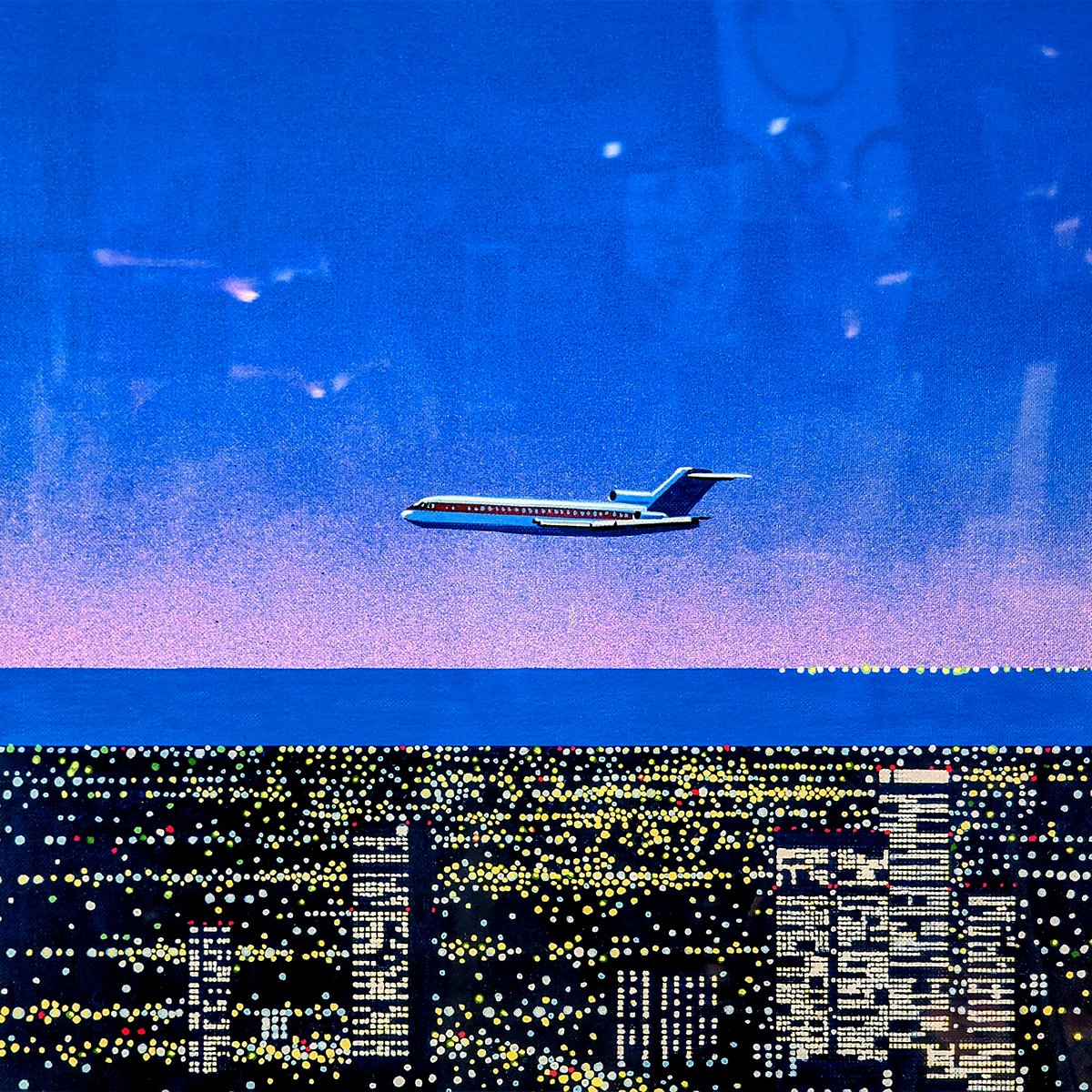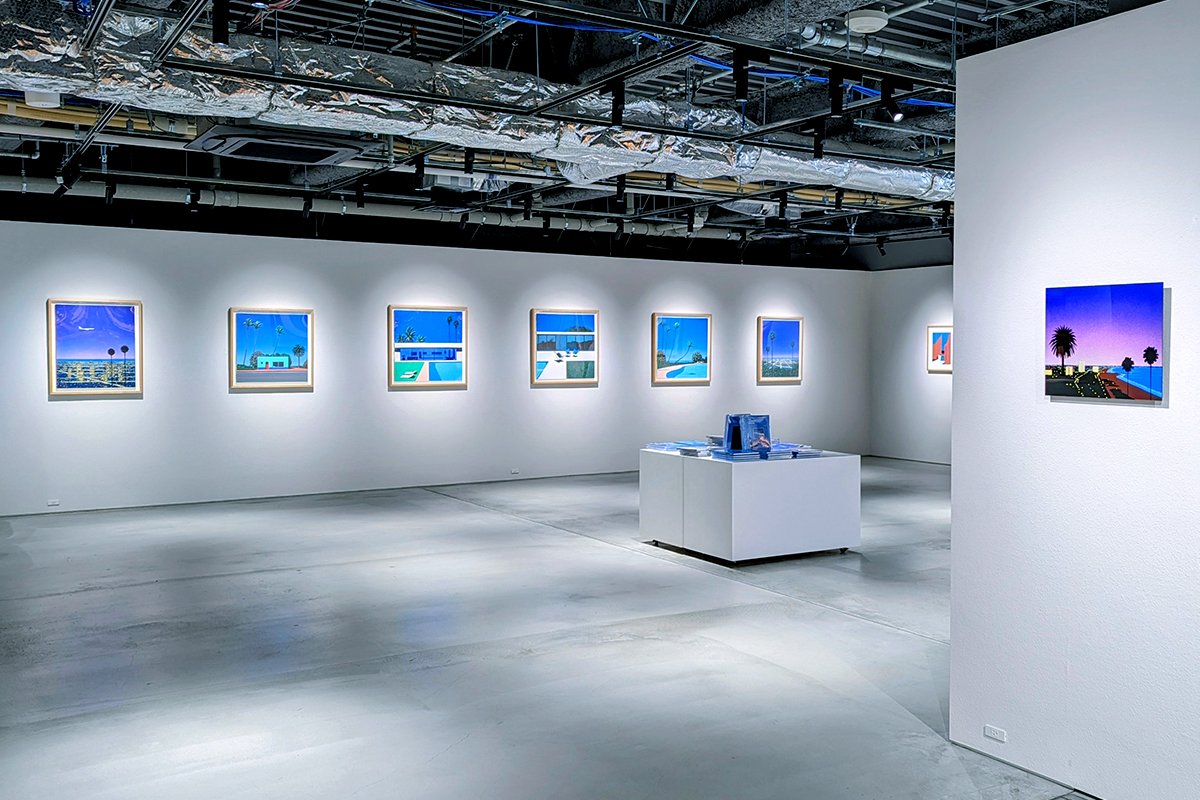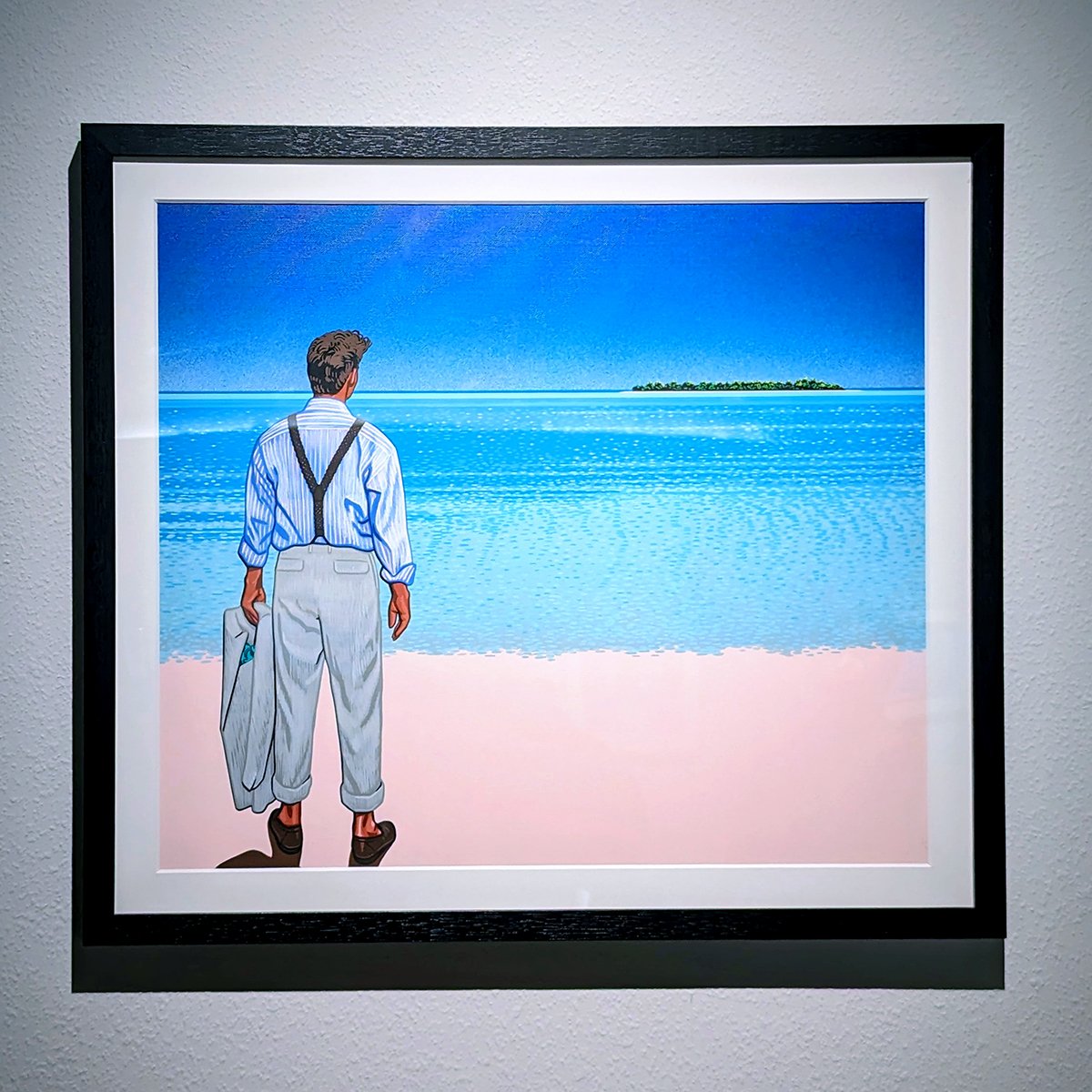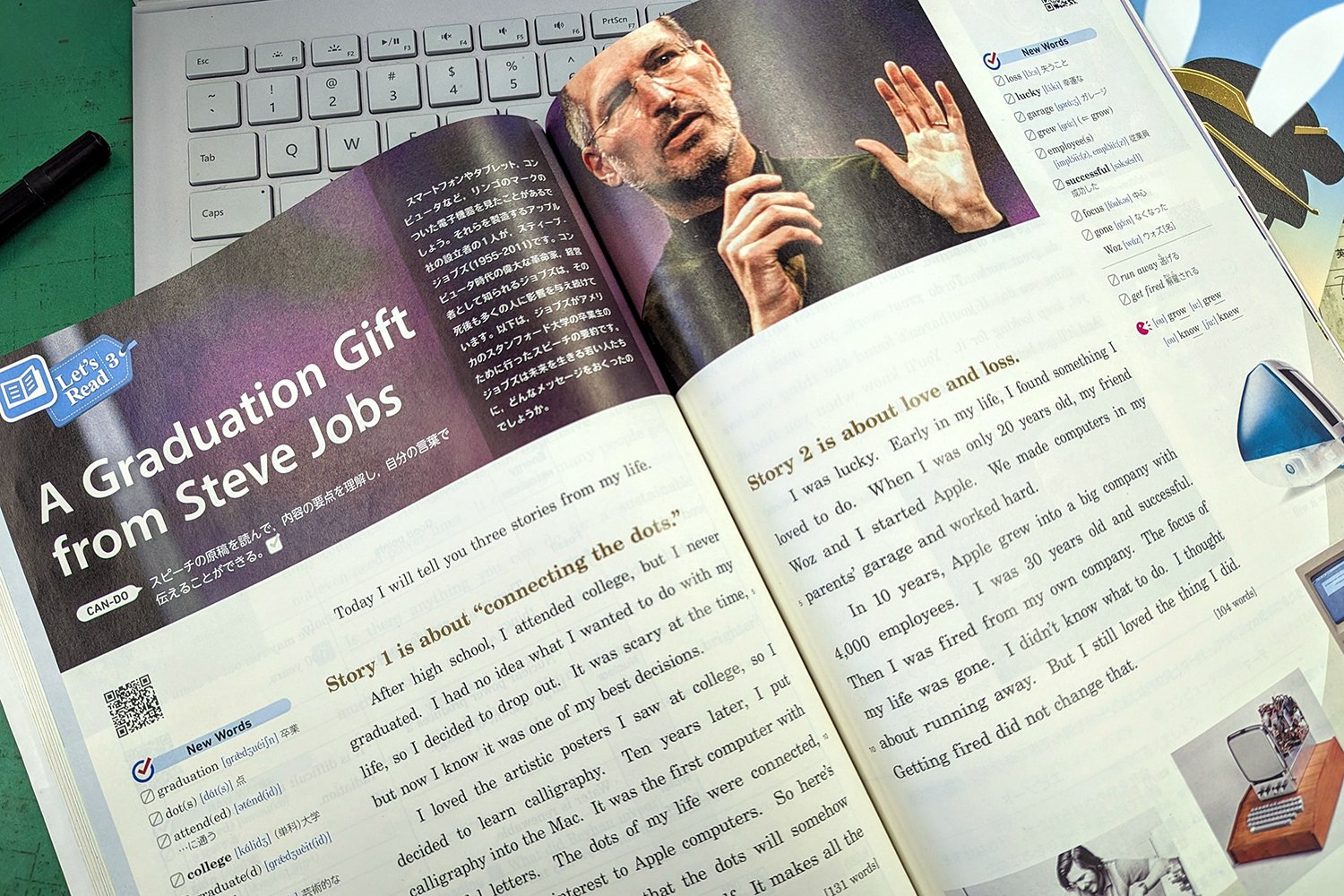Artist Hiroshi Nagai, Painter of ‘80s Paradise

The Japanese illustrator is enjoying a resurgence amid retro nostalgia.
Cover photo: Artist Hiroshi Nagai attends a book signing for “The Journey Begins,” at Kyoto Tsutaya Book Store, Takashimaya Kyoto S.C., Kyoto, Japan (2024). Photo by Danny With Love.
Intro
Instantly recognized by ultramarine landscapes of palm trees, pools, and modern buildings, 76-year-old artist Hiroshi Nagai (永井 博) is as popular as ever. Now he’s the star of two coinciding exhibitions with bookseller Tsutaya, celebrating the re-release of his sold-out career-best collection entitled The Journey Begins.
Nagai first caught my attention when I moved to Japan a couple years ago. His art permeates the culture — found on clothes, posters, and records. I was curious to see his original work in person, but it’s quite rare to find as he’s primarily a commercial artist. Luckily, I stumbled upon his show in Kyoto this weekend, including a book-signing event!
Featuring over 100 pages of illustrations, this new edition is beautiful, but lacking in context, so I did my own research.
Biography
Hiroshi Nagai was born in rainy Tokushima City in 1947. He’s a self-taught artist, first working as a TV set decorator, then becoming a freelance graphic designer in 1978. He currently resides in Tokyo, with a private studio and gallery in Ebisu.
By the 1970s, Japan was one of the world’s largest economies — second only to the United States. For many Japanese people, the nation was a symbol of the future. Japan’s standard of living was rising quickly and urbanites could suddenly indulge in the luxuries of fashion, nightlife, and travel.
Nagai developed a life-long obsession with the U.S. during his own visit to tropical Guam, Hawaii, and sunny California in ‘73. Flying over Los Angeles, he was shocked to see pools everywhere — by hotels, houses, and apartments. “At that time, there were no such pools in Japan,” Nagai recalls. “I just loved America.”
Style & Process
Nagai combined inspiration from pop art, hyperrealism, and surrealism to develop his style. Among other artists, he cites Andy Warhol, Robert Bechtle, and René Magritte as influences. He’s often drawn comparison to his contemporary, British painter David Hockney.
Unlike Hockney, however, Nagai was not documenting the lavish lifestyle of L.A. He was dreaming of America from afar, creating images of aspiration, advertising for a life just out of reach. “It’s a paradise everyone is looking for,” says singer Natsu Summer (ナツ・サマー).
Nagai invents his settings by referencing magazines, shopping catalogues, and travel brochures. He explains, “I’m bringing everything together and making a collage.”
Nagai’s work has a digital feel due to his geometric designs and precise rendering, but his process is completely analog. He uses acrylic paint and aerosol sprays, starting in grisaille or greyscale. The combination of primary blue with jet-black shadows evokes the dry heat of summer.
Left uninhabited, Nagai’s scenes are impersonal, anonymous. They possess a liminal, mysterious quality. “Maybe I’m painting landscapes that don’t even exist in America anymore,” considers Nagai. “Americans often say my paintings are nostalgic.”
As a young, first-generation American, I understand. Looking upon Nagai’s paintings, I found myself longing for a golden age I never knew — one that perhaps few people truly enjoyed. His elevated perspectives give me a sense of vertigo. It’s as if I’m floating through his dreams.
City Pop
The start of Nagai’s design career coincided with the rise of “City Pop” (シティポップ), a cosmopolitan genre of Japanese music developed under Western influence — notably rock, jazz, R&B.
Nagai’s 1978 painting A Long Vacation inspired singer-songwriter Eiichi Ohtaki (大瀧 榮一) to create a record of the same name, with the cover also featuring the artwork. The album was a major success and Nagai became synonymous with the genre, designing over 50 jacket covers. Both alien and comforting, Nagai’s imagined landscapes are the perfect setting for the “uncanny familiarity” of City Pop.
Rolling Stone’s Jon Blistein writes, “And just as this music reflected a new life of leisure and wealth, it also grappled with that wholly unique form of urban melancholy — the loneliness that grips you in the crowd, the fear of emptiness that sets in when everything you want seems to be sitting right there.”
City Pop was the soundtrack to the final years of the prosperous Showa Era, remembered for the post-war economic miracle. Unfortunately, the youthful yearning of City Pop evaporated by the 90s, caught in the bursting bubble of the so-called “Lost Decade.” Hope for a better future faded.
Revival
In the wake of the Great Recession, City Pop was resurrected as online music/art phenomenon “Vaporwave” (ヴェイパーウェイヴ). The remixed aesthetic borrowed from Nagai’s visual lexicon of palm trees, vintage cars, and cityscapes awash in dusk colors.
Thanks to foreign fans and internet algorithms, City Pop is now enjoying a resurgence of its own as it’s discovered by a new generation. Tokyo-based DJ Notoya says, “It sounds fresh, but at the same time, familiar.”
Mariya Takeuchi’s 1984 song Plastic Love broke Japan’s top ten sales chart for the first time ever in 2021 and Miki Matsubara’s 1979 hit Stay With Me has garnered over 100 million plays on YouTube alone. Music labels are reissuing records to capitalize on interest from young collectors and new musicians are emerging under the banner of “Neo City Pop” (ネオシティポップ).
Nagai is enjoying renewed interest as well, both in Japan and overseas. The 2020/21 show Hiroshi Nagai: Paintings for Music in Sydney, Australia, marked the artist’s first-ever international solo exhibition. He admits, “It is nice to see that I am not forgotten, that my old paintings are still in the minds of the young people and that they wanna collaborate with me.”
Thanks to Japan’s aging population, a mainstream 80s revival in the United States, and a slowing global economy, City Pop will likely grow in popularity. I hope we will see more of Nagai’s excellent work.
Hiroshi Nagai’s “The Journey Begins vol. 2” is on view at Kyoto Tsutaya until Tuesday, March 12th, and on view at Ginza Tsutaya until Wednesday, March 13th. Click here for more information.

